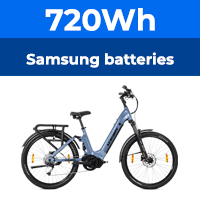Sorry to all,
But i just can not seem to let go regards to the good and shared BATTERY ADVICE that has been given especially to those on this top site who lack technical knowledge.
On this particular site there are so many people to name who are packed with valuable information and experiences, all combined can go as far as opening up a new PEDELECS PHASE TWO WEB SITE.
The point that i am making is, can anybody answer this difficult question for me? Right,still on the subject of batteries, is there any posibble way for us amateurs out there when just bought or planning to buy a new battery,is there anyway or meter to test the quality/integrity/capacity at present and what it has lost due to improper storage etc,to give you a basic idea to what you have?
I certainly don't mind to go as far as to removing the battery case if needed. It would be so nice to hear from you all to say, YES it is possible please help someone or two or three or even maybe four the more info the stronger i become Cheers!!!
Mountainsport. xxxxxxxxxxxxxxxxxxxxxxxxxxxxxxxxxxxxxxxxxxxxxxxxxxxxxxxxxxxxx
But i just can not seem to let go regards to the good and shared BATTERY ADVICE that has been given especially to those on this top site who lack technical knowledge.
On this particular site there are so many people to name who are packed with valuable information and experiences, all combined can go as far as opening up a new PEDELECS PHASE TWO WEB SITE.
The point that i am making is, can anybody answer this difficult question for me? Right,still on the subject of batteries, is there any posibble way for us amateurs out there when just bought or planning to buy a new battery,is there anyway or meter to test the quality/integrity/capacity at present and what it has lost due to improper storage etc,to give you a basic idea to what you have?
I certainly don't mind to go as far as to removing the battery case if needed. It would be so nice to hear from you all to say, YES it is possible please help someone or two or three or even maybe four the more info the stronger i become Cheers!!!
Mountainsport. xxxxxxxxxxxxxxxxxxxxxxxxxxxxxxxxxxxxxxxxxxxxxxxxxxxxxxxxxxxxx








